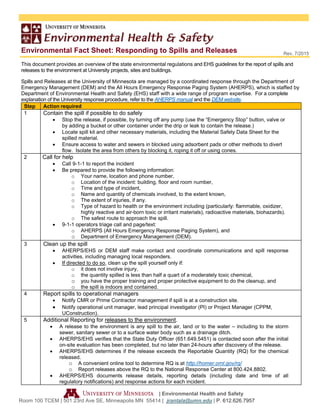Report
Share
Download to read offline

Recommended
Recommended
Context Information management in Internet of ThingsSelf-Organizing Logical-Clustering Topology for Managing Distributed Context ...

Self-Organizing Logical-Clustering Topology for Managing Distributed Context ...Hasib ur Rahman, PhD
More Related Content
Viewers also liked
Context Information management in Internet of ThingsSelf-Organizing Logical-Clustering Topology for Managing Distributed Context ...

Self-Organizing Logical-Clustering Topology for Managing Distributed Context ...Hasib ur Rahman, PhD
Viewers also liked (8)
Demonstrate the Value of Customer Education Using Salesforce

Demonstrate the Value of Customer Education Using Salesforce
Jishu Shi - U.S-China Center for Animal Health, Kansas State University

Jishu Shi - U.S-China Center for Animal Health, Kansas State University
WebCamp 2016: Python_Кирилл Перевозчиков _Рецепты приготовления uWSGI

WebCamp 2016: Python_Кирилл Перевозчиков _Рецепты приготовления uWSGI
Self-Organizing Logical-Clustering Topology for Managing Distributed Context ...

Self-Organizing Logical-Clustering Topology for Managing Distributed Context ...
Similar to UMN_FactSheet_Release 0715
Similar to UMN_FactSheet_Release 0715 (20)
Protocol for Chemical Spills Training by University of Northern Iowa

Protocol for Chemical Spills Training by University of Northern Iowa
Construction Safety Training_Session 03_Confined Spaces and Underground Works

Construction Safety Training_Session 03_Confined Spaces and Underground Works
5HUNTED HOUSE-CONTINGENCY MEASURE AND PROCEDURES.ppt

5HUNTED HOUSE-CONTINGENCY MEASURE AND PROCEDURES.ppt
Case Study – WIPP Radiological Release NSE 515 11212018 .docx

Case Study – WIPP Radiological Release NSE 515 11212018 .docx
Disaster Management in Libraries: Response and Recovery Operations for Water...

Disaster Management in Libraries: Response and Recovery Operations for Water...
Spill Response Training by New York Medical College

Spill Response Training by New York Medical College
UMN_FactSheet_Release 0715
- 1. Environmental Fact Sheet: Responding to Spills and Releases | Environmental Health and Safety Room 100 TCEM | 501 23rd Ave SE, Minneapolis MN 55414 | jrantala@umn.edu | P. 612.626.7957 Rev. 7/2015 This document provides an overview of the state environmental regulations and EHS guidelines for the report of spills and releases to the environment at University projects, sites and buildings. Spills and Releases at the University of Minnesota are managed by a coordinated response through the Department of Emergency Management (DEM) and the All Hours Emergency Response Paging System (AHERPS), which is staffed by Department of Environmental Health and Safety (EHS) staff with a wide range of program expertise. For a complete explanation of the University response procedure, refer to the AHERPS manual and the DEM website. Step Action required 1 Contain the spill if possible to do safely Stop the release, if possible, by turning off any pump (use the “Emergency Stop” button, valve or by adding a bucket or other container under the drip or leak to contain the release.) Locate spill kit and other necessary materials, including the Material Safety Data Sheet for the spilled material. Ensure access to water and sewers in blocked using adsorbent pads or other methods to divert flow. Isolate the area from others by blocking it, roping it off or using cones. 2 Call for help Call 9-1-1 to report the incident Be prepared to provide the following information: o Your name, location and phone number, o Location of the incident: building, floor and room number, o Time and type of incident, o Name and quantity of chemicals involved, to the extent known, o The extent of injuries, if any. o Type of hazard to health or the environment including (particularly: flammable, oxidizer, highly reactive and air-born toxic or irritant materials), radioactive materials, biohazards). o The safest route to approach the spill. 9-1-1 operators triage call and page/text: o AHERPS (All Hours Emergency Response Paging System), and o Department of Emergency Management (DEM). 3 Clean up the spill AHERPS/EHS or DEM staff make contact and coordinate communications and spill response activities, including managing local responders. If directed to do so, clean up the spill yourself only if: o it does not involve injury, o the quantity spilled is less than half a quart of a moderately toxic chemical, o you have the proper training and proper protective equipment to do the cleanup, and o the spill is indoors and contained. 4 Report spills to operational managers Notify CMR or Prime Contractor management if spill is at a construction site. Notify operational unit manager, lead principal investigator (PI) or Project Manager (CPPM, UConstruction). 5 Additional Reporting for releases to the environment. A release to the environment is any spill to the air, land or to the water – including to the storm sewer, sanitary sewer or to a surface water body such as a drainage ditch. AHERPS/EHS verifies that the State Duty Officer (651.649.5451) is contacted soon after the initial on-site evaluation has been completed, but no later than 24-hours after discovery of the release. AHERPS/EHS determines if the release exceeds the Reportable Quantity (RQ) for the chemical released. o A convenient online tool to determine RQ is at http://homer.ornl.gov/rq/ o Report releases above the RQ to the National Response Center at 800.424.8802. AHERPS/EHS documents release details, reporting details (including date and time of all regulatory notifications) and response actions for each incident.